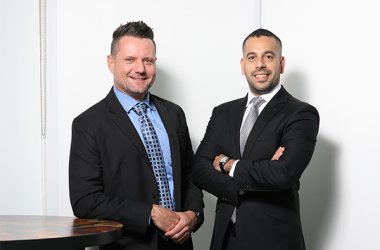
If current pricing trends for flash storage continue, consumers will be able to buy a 250G byte SSD (solid-state disk) for US$100 by 2013, SanDisk’s top executive said Wednesday.
The SSDs would be 10 times faster than any HDD (hard disk drive), SanDisk founder, Chairman and CEO Eli Harari said. "Who wouldn’t pay $100 for that kind of a drive? Everybody would want to have it."
There’s only one problem, he said: No manufacturer would build them.
"At this kind of pricing, no one will build fabs," Harari said in a keynote address at the Flash Memory Summit in Santa Clara, California. Technology may not advance fast enough to make it feasible, he said.
Flash storage supply and demand are in better balance now than at any other time in the past four years, but the way things are going, that can’t last, Harari said. The head of the world’s largest dedicated flash memory maker tried to give the industry a reality check at the annual trade show.
The cost of manufacturing a gigabyte of flash storage, used in consumer devices, USB thumb drives, Secure Digital cards and SSDs (solid-state disks), has fallen by about half every year since 2005, Harari said. But the price flash commands has fallen even faster. Flash makers’ revenue gains over the next five years wouldn’t cover the capital investments they would need to make to keep up with demand that analysts forecast, he said. It’s not clear where the capital will come from to build the multibillion-dollar fabrication plants required to make the chips, he said.
"You’re going to have to invest $30 billion in order to generate $20 billion of new revenue," Harari said. "If the analysts are right, then the industry is basically irrational and suicidal."
"Things going forward are not going to be the same as things in the past," Harari said.
The industry achieved its current balance by cutting back production due to the global economic downturn that began in late 2007, Harari said. But looking ahead, makers of today’s commonly used NAND flash face technical challenges that will slow the pace of increasing density on flash chips while increasing costs, he said. The rapidly declining costs of the past several years will slow down.
For one thing, the latest advance in packing more bits on each cell, which is taking manufacturers from 2-bit technology to 3-bit, doesn’t deliver the same impact as the previous move from 1-bit to 2-bit, Harari pointed out. At the same time, more dense chips need more advanced controllers. The emerging x4 technology will only be useful in a few applications, Harari said.
Harari does expect growing demand over the next few years, with the biggest opportunity in mobile phones. Multimedia phones, especially a variety of gaming handsets coming in the next 12 months, will increase demand for both embedded and removable storage, he said. The biggest growth potential lies in developing countries.
SSDs also offer high growth potential, possibly making up one-third or one-half of all bits of flash storage sold annually within five years, Harari said. But the big challenge will be profitability, because while enterprises understand the speed and size benefits of flash over HDDs, most consumers don’t and will demand prices closer to those of HDDs, he said. The enterprise SSD market is already viable for vendors that focus on it, such as STEC, but that market isn’t big enough to sustain large, general-purpose vendors such as SanDisk, Harari said.
The only thing that might kick off another wave of rapid cost declines is a totally new technology, Harari said. He believes the most likely candidate is 3D read/write, which SanDisk said last year it is developing with Toshiba. All major NAND vendors are researching 3D read/write, Harari said. Possibly arriving on the market in 2012, 3D read/write might cut manufacturing costs enough to make SSDs a mainstream industry, but it’s still early in development, he said.
Another speaker at the conference had a brighter outlook on SSDs in PCs. Flash drive manufacturers shouldn’t worry about charging $200 for SSDs, because an SSD can boost a PC’s performance more than any other component except the CPU, according to Francois Piednoel, a senior performance analyst at Intel. While PC prices remain relatively stable, SSDs can command a greater percentage of the price because many other components, such as mice, become essentially free, he said.
To demonstrate the benefits of flash, Piednoel zoomed in on a collection of 21,700 photos on a PC, continuously zooming until he was showing close-up details on one image. That continuous zooming wouldn’t be possible with a hard drive, he said
Prices can’t keep falling without a major advance in technology, he says





